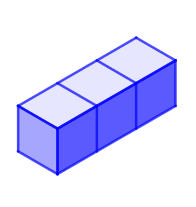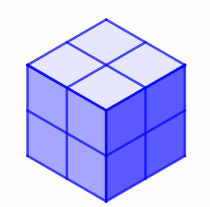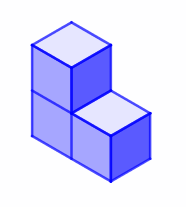Or search by topic
Number and algebra
Geometry and measure
Probability and statistics
Working mathematically
Advanced mathematics
For younger learners
Nicola's Jigsaw




Nicola has a three dimensional puzzle made from cubes.
- There are six pieces altogether, but unfortunately one has gone missing
- All six pieces are different shapes
- The pieces fit together to make a 3 by 3 by 3 cube
Here are diagrams showing five of the pieces:





Can you figure out what shape the sixth piece is?
Is there more than one possible shape that the sixth piece could be?
You may wish to use multilink cubes like the ones shown in the photo to help you solve the problem.
Many thanks to Nicola Coe who created the original task on which this problem is based.
Nicola has now produced this new version of the jigsaw. How many different arrangements of 4 blocks can you find to complete the 3x3x3 cube?
You may also like
Soma - So Good
Can you mentally fit the 7 SOMA pieces together to make a cube? Can you do it in more than one way?
Nine Colours
Can you use small coloured cubes to make a 3 by 3 by 3 cube so that each face of the bigger cube contains one of each colour?
Take Ten
Is it possible to remove ten unit cubes from a 3 by 3 by 3 cube so that the surface area of the remaining solid is the same as the surface area of the original?

